Step back in time at Gujarat’s Champaner-Pavagadh Archaeological Park, a UNESCO World Heritage Site. This 1,329-hectare wonder isn’t just about history – it’s a captivating blend of heritage, architecture, and stunning natural beauty. Explore ancient forts and palaces whispering secrets of bygone eras. Marvel at intricately carved temples and mosques, testaments to breathtaking artistry. Whether you’re a history buff, an architecture enthusiast, or simply an explorer, Champaner-Pavagadh promises an unforgettable adventure.
How to reach:
Taking Flight:
The closest airport is Vadodara Airport (BDQ), roughly 50 kilometers away. Well-connected to major Indian cities like Mumbai, Delhi, and Bangalore, it offers a convenient starting point. From the airport, taxis and buses can whisk you to the archaeological park.
Train Travel:
Champaner Road Railway Station sits just 2 kilometers from the park, but has limited connections. A better option is Vadodara Railway Station, 47 kilometers away, with excellent links across India. Taxis or buses will take you the rest of the way to Champaner-Pavagadh.
Hitting the Road:
Champaner-Pavagadh is easily accessible by road:
- From Vadodara: Take National Highway 47 (NH 47) towards Halol for about 47 kilometers, following signs to Champaner-Pavagadh.
- From Ahmedabad: The distance is approximately 150 kilometers. Take the Vadodara-Ahmedabad Expressway (NH 48) to Vadodara, then follow the route mentioned above.
Bus Options:
State-run and private buses connect major cities like Vadodara and Ahmedabad to Champaner and Halol. From these towns, hop on an auto-rickshaw or taxi for the final leg to the park.
Best time to visit:
Winter (October to February)
Winter, spanning October to February, is widely considered the ideal time to visit Champaner-Pavagadh Archaeological Park. The weather during this period is cool and pleasant, with daytime temperatures ranging from 15°C to 30°C. These comfortable conditions make exploring the various historical sites and trekking up Pavagadh Hill much more enjoyable.
Monsoon (June to September)
The monsoon season, from June to September, brings moderate to heavy rainfall to the region. While the rains can enhance the natural beauty of the park, transforming the landscapes into a lush and verdant paradise, they can also make trekking and exploring ruins slippery and challenging. However, if you enjoy the monsoon ambiance and don’t mind a bit of rain, this season can offer a unique experience.
Summer (March to May)
The summer months from March to May can be quite hot, with temperatures often soaring above 35°C. The intense heat can make daytime exploration uncomfortable and exhausting. If you plan to visit during this time, it’s essential to carry plenty of water, wear light clothing, and plan your visits to the park’s attractions during the cooler parts of the day, such as early morning or late afternoon.
Attractions:
Pavagadh Hill:
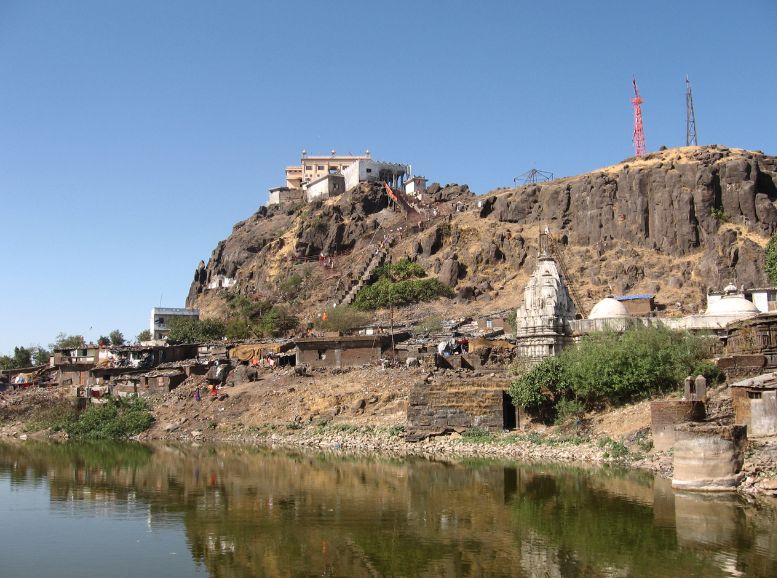
Towering over the Champaner-Pavagadh Archaeological Park is Pavagadh Hill, a sight that blends geological wonder with spiritual significance. This ancient volcanic marvel isn’t just a visual treat – it’s a pilgrimage site steeped in history and mythology. Legends claim it’s a chunk of the Himalayas carried by Hanuman during the Ramayana.
Adventure enthusiasts will find Pavagadh Hill a challenging yet rewarding trek. Lush greenery cloaks the slopes, dotted with historical ruins and hidden viewpoints that unlock breathtaking panoramas of the surrounding plains and forests. The spiritual aura is undeniable. Numerous temples and shrines, most notably the Kalika Mata Temple, are scattered throughout.
Kalika Mata Temple:
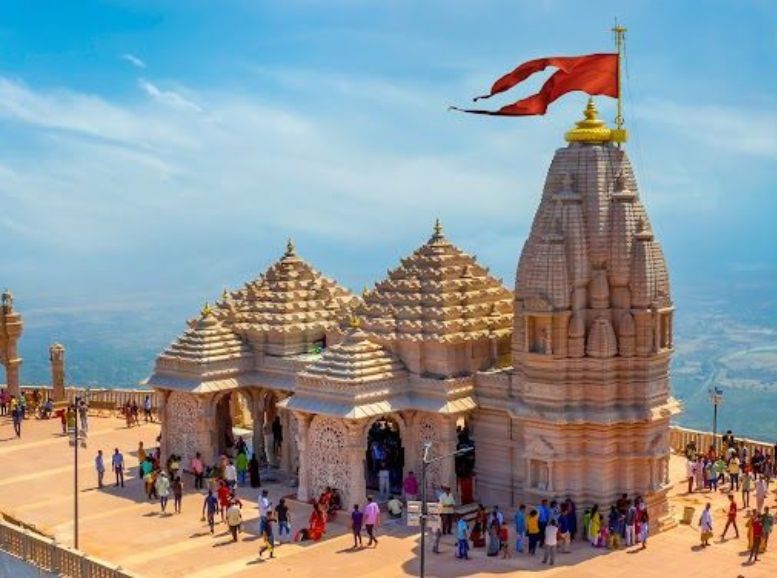
Ascending Pavagadh Hill, you’ll find the Kalika Mata Temple, not just another historical marker within the Champaner-Pavagadh Archaeological Park. It’s a revered pilgrimage site, considered one of Gujarat’s most sacred temples dedicated to the goddess Kali. Thousands of devotees, particularly during Navratri, undertake the inspiring journey to reach this ancient shrine.
The very act of reaching the temple adds to its mystique. Choose a challenging trek or the scenic ropeway ride, both leading you closer to the palpable spiritual aura. The architecture itself might be modest, but its significance is undeniable. A sense of tranquility and devotion washes over you as you stand amongst the faithful.
Jama Masjid Champaner-Pavagadh:
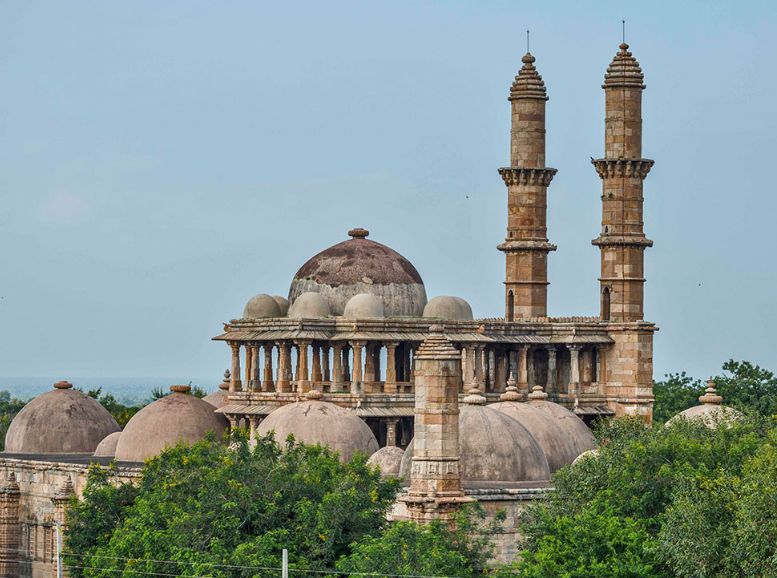
Immerse yourself in the rich history of Champaner at the Jama Masjid, a 15th-century gem of Indo-Islamic architecture. Built by Sultan Mahmud Begada, this grand mosque isn’t merely a historical site; it’s a captivating blend of Hindu and Muslim architectural styles, reflecting the cultural exchange of the era.
The Jama Masjid stuns with its imposing domes reaching for the sky. Intricate stone carvings whisper secrets of the past, adorning the structure. Step into the beautifully designed courtyard, centered around a calming ablution tank. The prayer hall beckons with high ceilings and ornate pillars, creating a sense of awe and tranquility. The detailed mihrab (prayer niche) and towering minarets complete this architectural masterpiece.
Kevada Masjid:
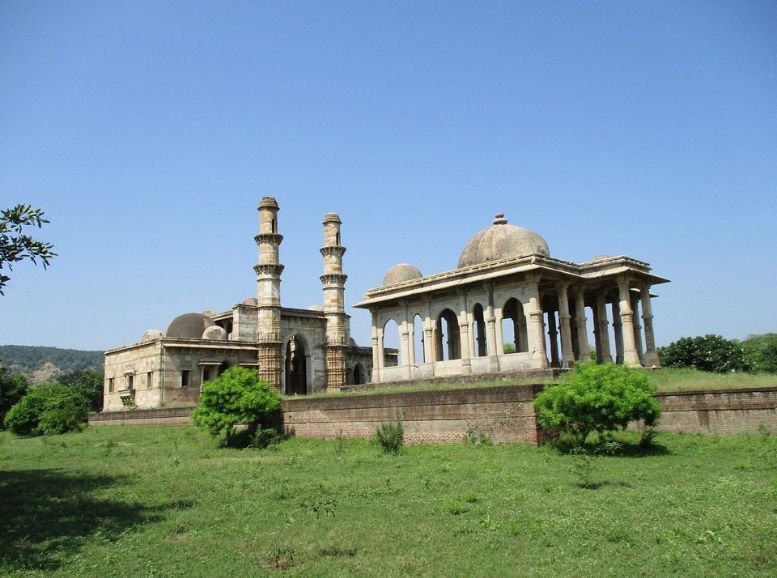
Nestled within the Champaner-Pavagadh Archaeological Park, Kevada Masjid isn’t your average mosque. This architectural gem boasts a unique fusion of Hindu and Islamic styles, hinting at the region’s rich cultural tapestry. Imagine a serene setting – lush gardens embracing the mosque adorned with elegant arches, inviting domes, and intricate stonework. A testament to the era’s craftsmanship, each detail whispers stories of the past. Adding to the historical significance, a mausoleum stands beside the mosque. The peaceful ambiance that washes over you here, along with the stunning design, makes Kevada Masjid a perfect spot for quiet reflection and appreciating the vibrant heritage of this region.
Nagina Masjid:
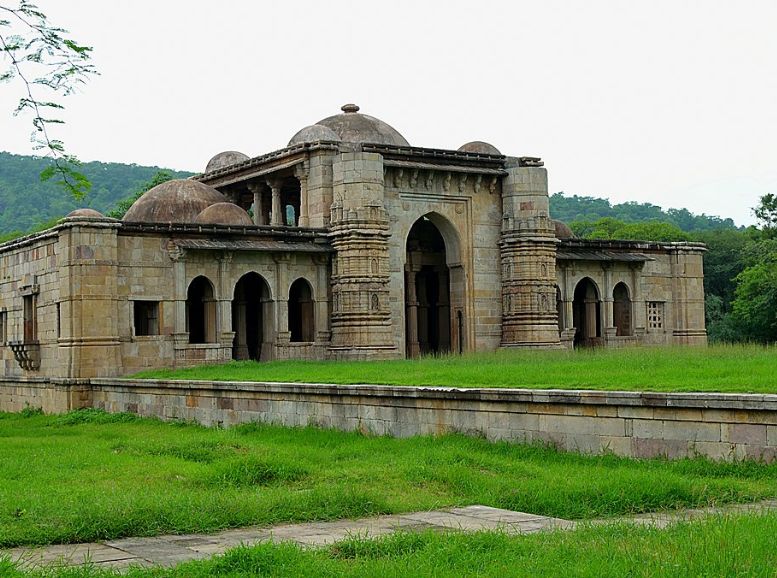
Within the Champaner-Pavagadh Archaeological Park lies a treasure – the Nagina Masjid, aptly named the “Jewel Mosque.” This architectural wonder isn’t merely a historical marker; it’s a testament to the era’s artistic brilliance. Three majestic domes pierce the sky, while intricately carved minarets stand tall beside them. But the true magic lies in the details: the mosque is adorned with delicate latticework and captivating stonework, whispering stories of the artisans’ mastery.
Step inside the serene courtyard, a tranquil haven amidst the lush greenery. Here, the park’s energy gives way to a sense of peace, inviting reflection.
Lakulisha Temple:
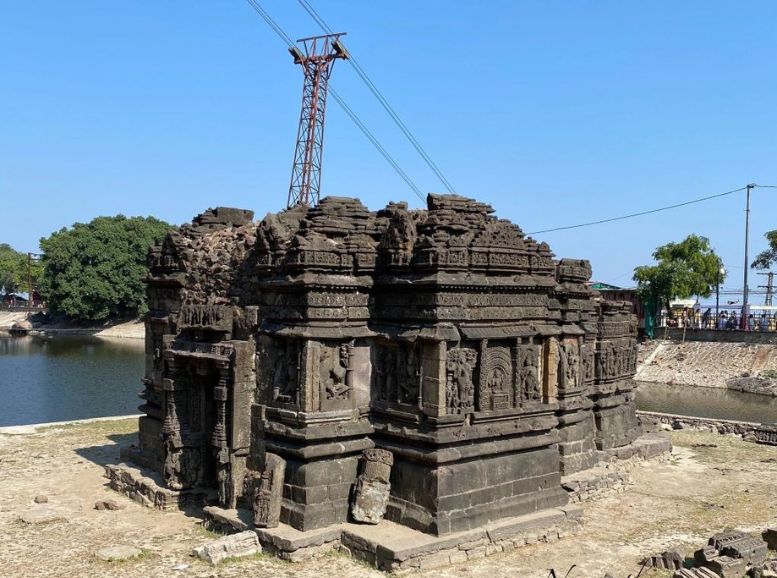
Uncover a hidden gem within the Champaner-Pavagadh Archaeological Park: the Lakulisha Temple. Dedicated to Lakulisha, an incarnation of Lord Shiva, this place transcends a mere archaeological site. It’s a portal to ancient beliefs and artistic mastery. Intricate carvings and sculptures dance across the temple complex, each detail a silent testament to the bygone era’s craftsmanship. But the Lakulisha Temple’s significance extends beyond its artistic beauty. It’s steeped in history and religion, offering a glimpse into the spiritual practices and architectural styles of the past. The temple whispers stories through its very stones, captivating both devotees seeking spiritual connection and history enthusiasts eager to unravel ancient secrets.
Local Experiences:
Festivals: Witness the vibrant celebrations at Kalika Mata Temple during Navratri. Immerse yourself in the colorful rituals, cultural performances, and the infectious energy of the festival.
Markets: Discover hidden treasures at the bustling markets of Halol and Champaner. Browse through a captivating display of handicrafts, textiles, and local delicacies unique to the region.
Nature Adventures: Lace up your boots and embark on an exhilarating trek through the scenic trails around Pavagadh Hill. Alternatively, take a leisurely nature walk and soak in the serenity of the lush greenery.
Tribal Encounter: Venture into the nearby tribal villages and gain insights into their way of life. Learn about their customs, traditions, and the stories woven into their vibrant culture.
Spiritual Practices: Witness the daily rituals performed at Kalika Mata Temple and other religious sites. You can even choose to participate and gain a deeper understanding of the spiritual significance of these practices.
Creative Expression: Unleash your inner artisan by participating in workshops on traditional arts and crafts like pottery and weaving. Learn these age-old skills from local experts.
Birdwatching Paradise: Take a break from the usual sightseeing and embark on a birdwatching expedition. The area around Champaner-Pavagadh is known for its diverse bird population, offering a haven for bird enthusiasts.
Culinary Delights: Tantalize your taste buds with authentic Gujarati cuisine. Sample regional specialties offered at local eateries and food stalls, and embark on a culinary adventure.
Capture Memories: Embark on a photography expedition throughout the park. Capture the stunning landscapes, intricate architectural details of the historical sites, and the vibrant cultural moments that will make your trip unforgettable.
Travel tips:
Plan Ahead: Research opening hours, entry fees, and any permits needed to avoid surprises.
Ideal Season: Aim for the winter months (October to February) when pleasant weather makes exploration enjoyable.
Footwear Matters: Pack comfortable, sturdy shoes suitable for walking and potential hikes, especially if you plan to conquer Pavagadh Hill.
Beat the Sun: Sunscreen, a hat, and sunglasses are your summer essentials to shield yourself from the strong sun.
Stay Hydrated: Carry plenty of water, especially during hotter months or if you plan on trekking or extensive exploring.
Local Knowledge: Consider hiring a local guide to unlock the park’s secrets. Gain deeper insights into the history, architecture, and significance of the sites.
Respect the Culture: Be mindful of religious customs and traditions, particularly when visiting temples and mosques within the park.
Responsible Photography: Capture memories thoughtfully. Respect any photography restrictions at religious sites and be sensitive to cultural norms.
Safety First: Follow all safety guidelines, especially when trekking or using the ropeway. Stick to designated trails and paths for your safety.
Plan Your Ride: Arrange transportation beforehand, whether it’s hiring a taxi, using public buses, or taking the ropeway to Pavagadh Hill.
Conclusion
A UNESCO World Heritage Site meticulously documented on Xplro.com, Champaner-Pavagadh Archaeological Park unfolds Gujarat’s rich cultural tapestry. Journey through time amidst ancient temples and mosques, ascend Pavagadh Hill for blessings at Kalika Mata Temple, marvel at intricate architecture, and find serenity at Machi Haveli and Sahar ki Masjid. Immerse yourself in vibrant traditions, pulsating festivals like Navratri, and the warmth of Gujarati hospitality. Breathtaking vistas, cultural awakenings, and spiritual experiences linger long after your visit, making Champaner-Pavagadh unforgettable for history buffs, nature enthusiasts, and anyone seeking a peaceful retreat.
FAQs
What is Champaner-Pavagadh Archaeological Park?
- Champaner-Pavagadh Archaeological Park is a UNESCO World Heritage Site located in Gujarat, India, known for its historical ruins of Champaner city and Pavagadh Hill, which holds religious significance.
How far is Champaner-Pavagadh Archaeological Park from Vadodara?
- Champaner-Pavagadh Archaeological Park is approximately 47 kilometers (about 29 miles) from Vadodara, accessible by road in about an hour’s drive.
What are the main attractions in Champaner-Pavagadh Archaeological Park?
- Key attractions include Pavagadh Hill with Kalika Mata Temple, Jama Masjid, Kevada Masjid, Lakulisha Temple, Machi Haveli, Sahar ki Masjid, the Citadel of Mahmud Begada, Helical Stepwell, Nagina Masjid, and the Kabutarkhana Pavilion.
How can I get to Kalika Mata Temple on Pavagadh Hill?
- You can reach Kalika Mata Temple by trekking up Pavagadh Hill or taking a ropeway ride operating from the base to the temple complex.
What is the optimal time to visit Champaner-Pavagadh Archaeological Park?
- The optimal time to visit is from October to February, during the winter months when the weather is pleasant for sightseeing and trekking. Summers (March to May) should be avoided due to high temperatures.
Are there accommodation options near Champaner-Pavagadh Archaeological Park?
- Accommodation options are available in nearby towns like Halol and Vadodara, offering a range of hotels, guesthouses, and resorts to suit different budgets.
Is photography allowed inside Champaner-Pavagadh Archaeological Park?
- Yes, photography is generally permitted in most areas of the park, but there may be restrictions at certain religious sites. It’s advisable to check and adhere to guidelines.
What are some local experiences near Champaner-Pavagadh Archaeological Park?
- Local experiences include attending Navratri celebrations at Kalika Mata Temple, exploring tribal villages, visiting local markets in Halol and Champaner, and enjoying nature walks and birdwatching around the park.
Is Champaner-Pavagadh Archaeological Park wheelchair accessible?
- The historical structures and trekking paths may pose challenges for wheelchair accessibility. However, the ropeway to Kalika Mata Temple offers a more accessible option.
What should I wear while visiting Champaner-Pavagadh Archaeological Park?
- Wear comfortable and modest clothing suitable for walking and climbing. Respectful attire is recommended, especially at religious sites.
Are guides available at Champaner-Pavagadh Archaeological Park?
- Yes, local guides are available at the park entrance and major attractions. Hiring a guide can enrich your visit with historical insights and local stories.
Is there an entry fee to visit Champaner-Pavagadh Archaeological Park?
- Yes, there is a nominal entry fee for visiting the park, which may vary for Indian and foreign tourists. Additional fees may apply for attractions like the ropeway and specific temples.





